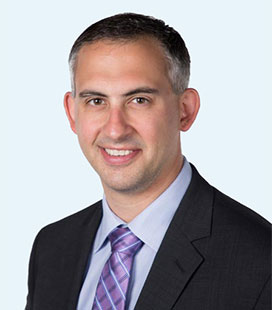Ramin Hastings, MD, is an interventional cardiologist at Englewood Health Physician Network −Cardiovascular Consultants of North Jersey.
Aortic stenosis is characterized by the thickening and calcification of the aortic valve. This valve connects the left ventricle of the heart to the aorta, which carries blood throughout the body. When the valve becomes constricted, the heart has to work harder to pump and supply blood to the body.
What symptoms might someone with aortic stenosis experience that would prompt them to see a doctor?
Dr. Hastings: The most common symptoms I witness are shortness of breath, fatigue and an inability to exercise or conduct the daily activities you were once comfortable performing. Some patients also experience chest pain. The two most serious symptoms are losing consciousness or going into overt heart failure.How is aortic stenosis typically treated?
Dr. Hastings: The treatment of aortic stenosis is undergoing a rapid change as we speak. The traditional treatment has been open heart surgery to replace the blocked valve. Unfortunately, because this is a mechanical problem, there are no medications that can help. You have to manually replace the valve with a new one, often made of metal or material from a pig or cow heart. However, this has changed with the development of a procedure called transcatheter aortic valve replacement, or TAVR.What is TAVR?
Dr. Hastings: TAVR is an alternative to open heart surgery where we can replace the aortic valve through a minimally invasive technique, entering via a needle stick through the groin area. While TAVR has only been in commercial use for seven years, the design has advanced by leaps and bounds in that time and the pool of patients for whom this technique is appropriate continues to expand.Who is a good candidate for the TAVR procedure?
Dr. Hastings: Initially this procedure was used only for patients at high risk for complications from open heart surgery. However, we are now offering it to people who are at intermediate risk. Many ongoing studies are evaluating this treatment’s use on people who are low risk for complications. The results of those studies are going to be released over the next few months, and the pool of patients may expand even further.What are the benefits of TAVR compared to surgical valve replacement?
Dr. Hastings: The obvious benefit is that there is no need for open heart surgery or the use of a heart/lung machine. Recent studies have compared these two treatment options and discovered that a TAVR valve seem to be better than a surgical valve in terms of blood flow. There are also signs that the chances of having a stroke while undergoing a TAVR procedure may be less than during an open heart procedure. There are some downsides of TAVR that patients should discuss with their doctor. The main drawback is the fact that we don’t have long-term data to determine whether the valve is just as durable as a surgical valve. That data, however, is being collected and further advances will continue to drive the field. I cannot stress enough that with these new advances, no one should live with the symptoms of aortic stenosis because they are afraid of having open heart surgery. Posted February 2019
